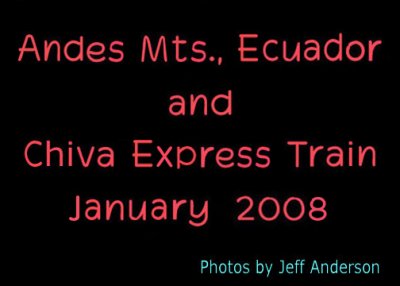
Andes Mts. and Chiva Express cover page. |
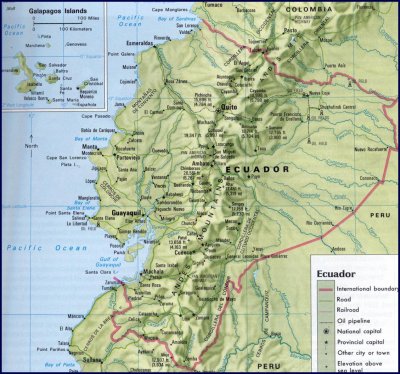
Topographical map of Ecuador showing the Atlas Mountains. |
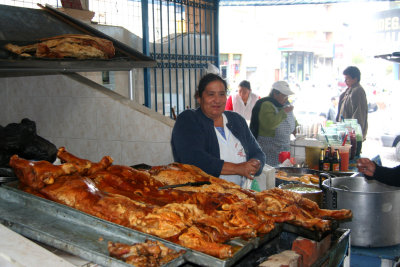
Pig carcasses for sale at a food market in San Goqui (the first stop on my Andes tour). |
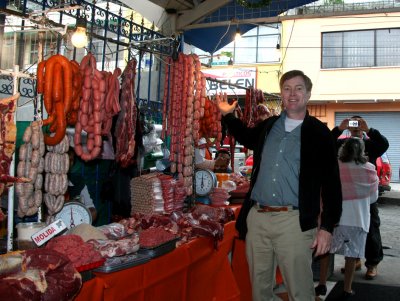
Me pointing proudly to a sausage and meat stand in the market. |
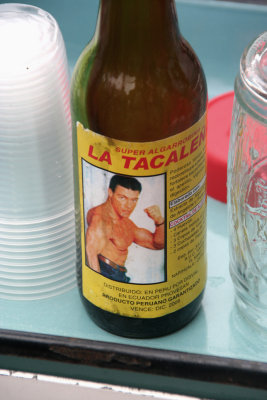
An energy drink sold at the market. Maybe, I'll look like that if I drink it! |
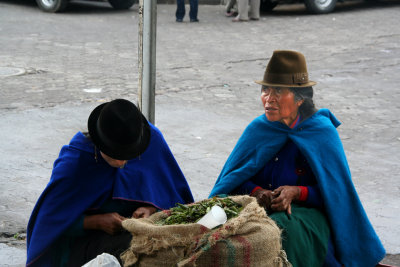
Two Ecuadorian Indian women shucking peas. |
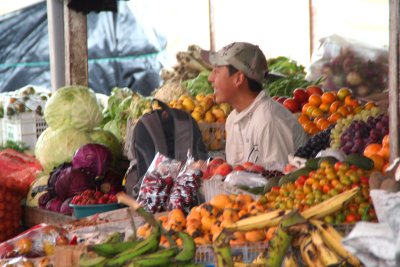
A fruit and vegetable vendor amongst his produce. |
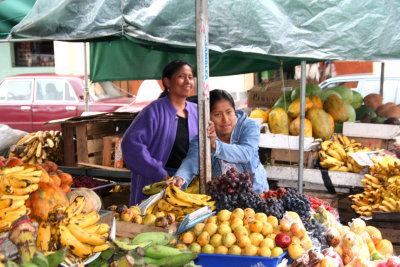
Two friendly vendors selling fruit at the market. |
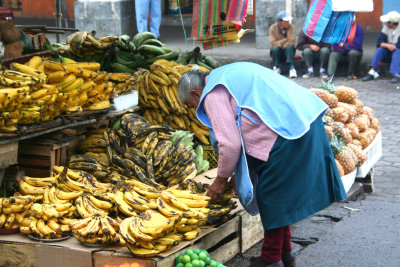
This woman would not let me take her picture, so I snuck up behind her to get this one! |
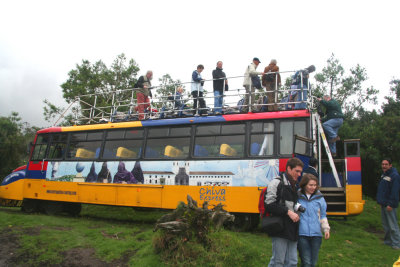
Tourists disembarking from the Chiva Express train that took us through the Andes Mts. |
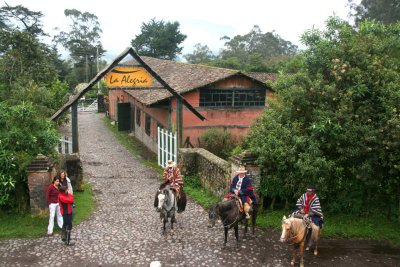
Ecuadorian "cowboys" greeting us at La Alegria hacienda, during a train stop on the Chiva Express. |

La Alegria is a family-run organic farm in the heart of Ecuador's "Avenue of the Volcanoes." |
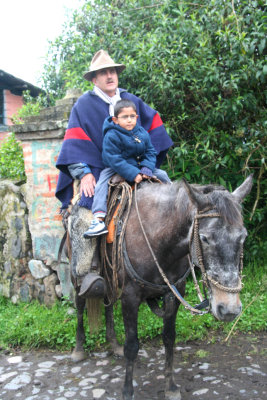
A cowboy with his son on horseback at the hacienda. |
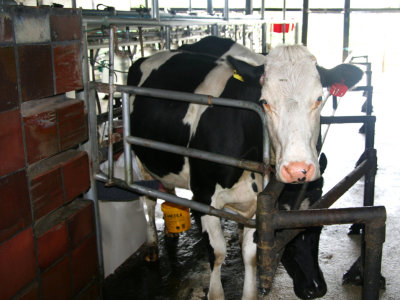
A milk cow at the hacienda. I milked a cow while there. |
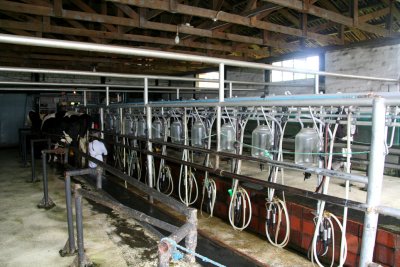
Milk production equipment at the hacienda. |
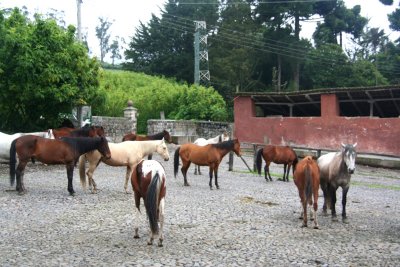
Horses at the hacienda bred from mixed Criollo (native South American), English thoroughbred and Arabian stock. |
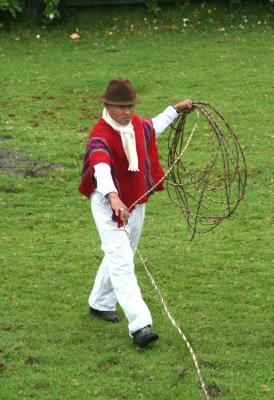
One of the Ecuadorian cowboys showing his skills with a rope. |
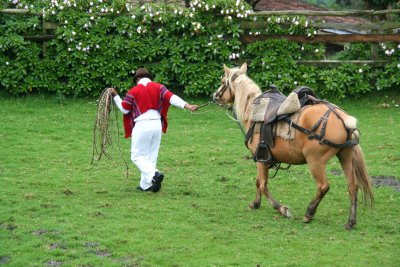
The same cowboy pulling a horse. |
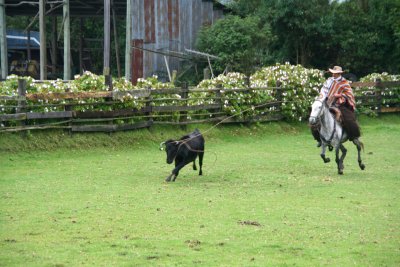
Another cowboy demonstrated how to lassoo a bull. |
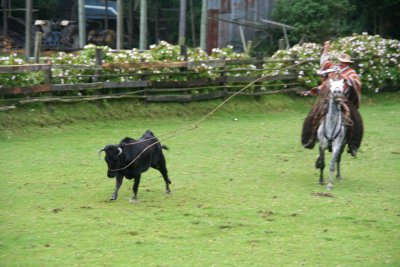
After lassooing the bull, he pulled back on the rope to tighten it around the bull's neck. |
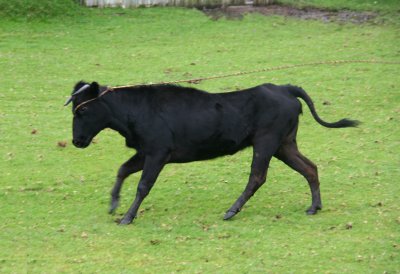
Close-up of the bull. |
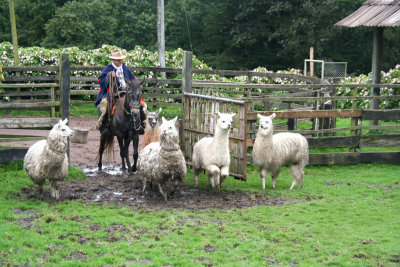
This cowboy opened a pen to let out alpacas and llamas into the corral. |
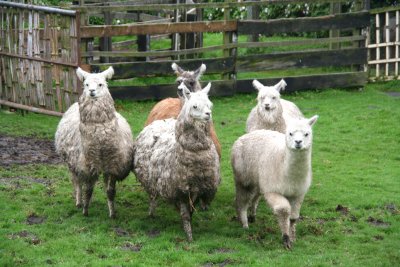
Alpacas and llamas running into the corral. |

A boy at the hacienda holding a llama with a rope. |
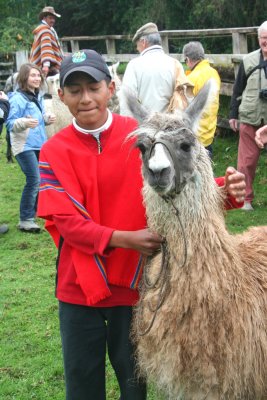
Close-up of the boy and the llama. |
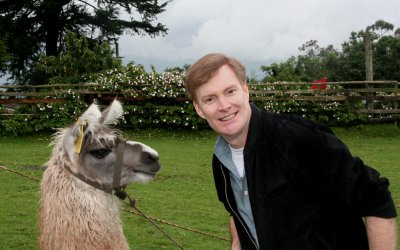
Me posing with the llama. |
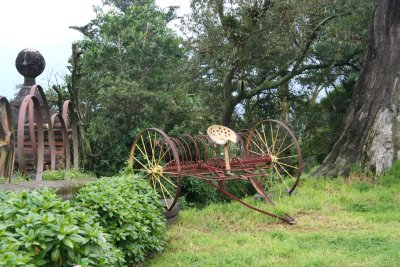
I snapped this photo of this metal wagon at the hacienda. |
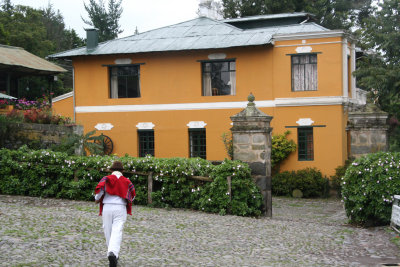
Farmhouse at the hacienda where we had a delicious breakfast. |
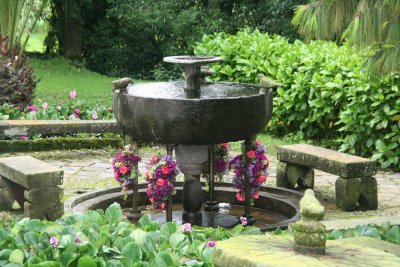
Fountain at hacienda La Alegria. |
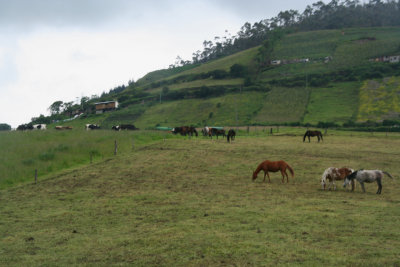
After breakfast, we re-boarded the Chiva Express from which I snapped this photo of cows grazing. |
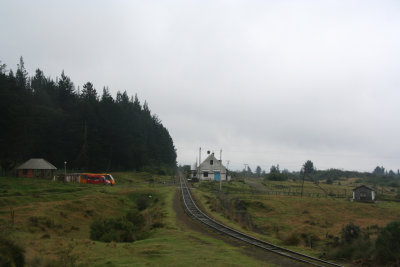
Our next stop was just ahead. We got off the train to visit a rose farm. |
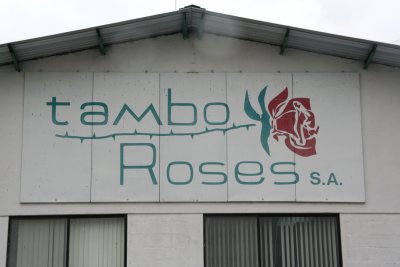
Tambo Roses produces and exports a great number of rose varieties that are shipped all over the world. |
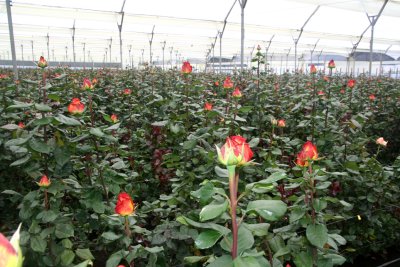
The roses were almost in bloom in time for Valentines Day when over 600,000 roses are shipped out. |
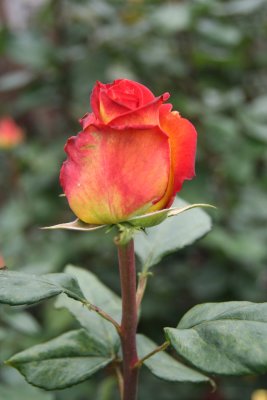
Close-up of one of the varieties of roses. |
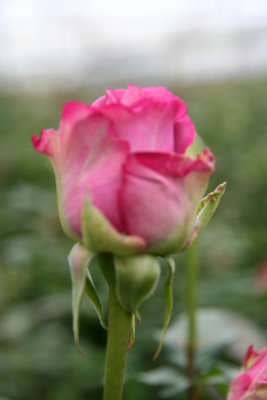
A beautiful pink rose at Tambo Roses. |
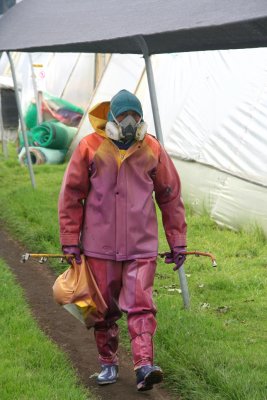
This worker with the mask was getting ready to spray the roses. |
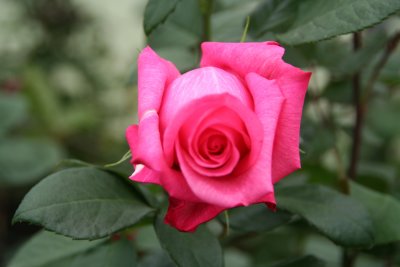
Another gorgeous rose that was blooming at the rose farm. |
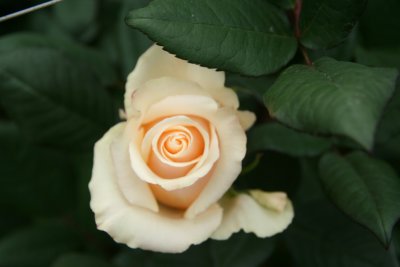
A cream colored rose at Tambo Roses. |
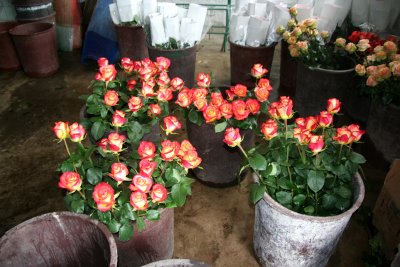
Bunches of roses that were being prepared before shipping. |

This worker at Tambo Roses was cutting and pruning the roses. |
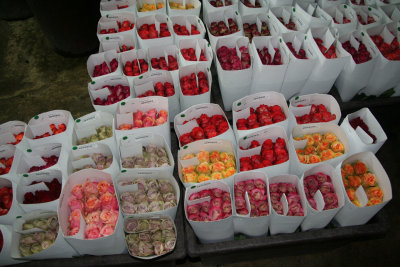
Bunches of roses in a multiple colors to be shipped out for Valentines Day. |
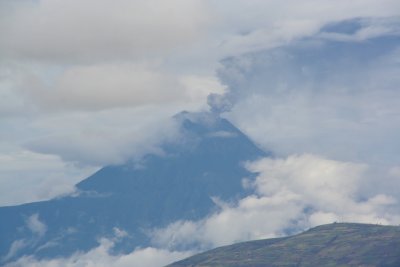
After leaving the rose farm, we passed by this active volcano in Ecuador's "Avenue of the Volcanoes." |
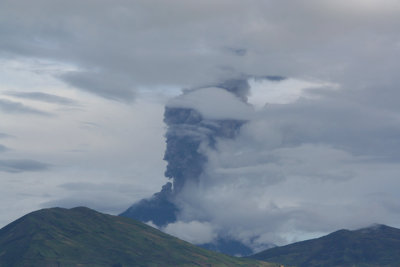
Ash billowing from the volcano. |
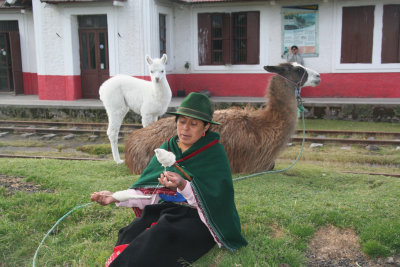
Our next stop was the Taller de Tagua gift shop where this woman was spinning alpaca wool. |

This Ecuadorian man in alpaca chaps posed with an alpaca. |
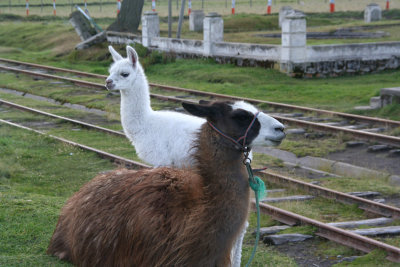
A mother and her pure white baby in front of the Taller de Tagua gift shop. |
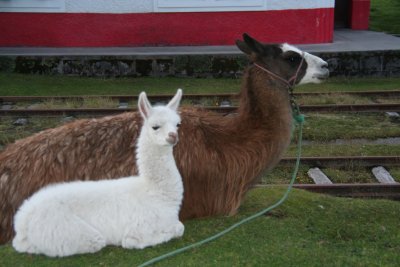
The mother and baby at rest. |
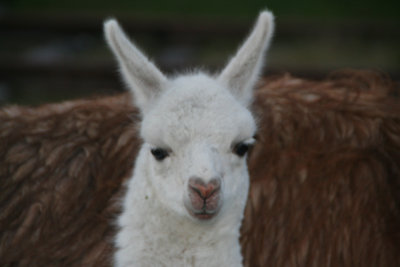
Close-up of the baby alpaca. |
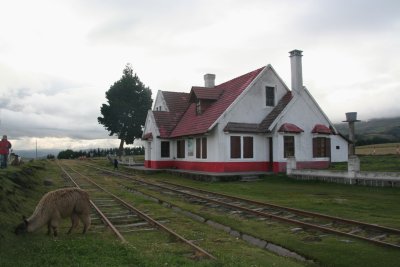
A bucolic photo of the Taller de Tagua gift shop, which is next to the train tracks. |
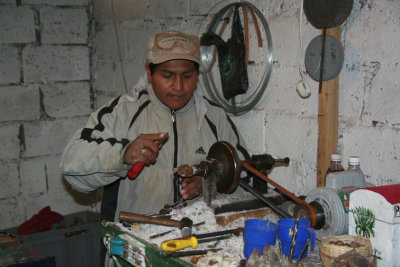
Ecuadorian man carving ivory-like figurines from seed of the tagua fruit. |
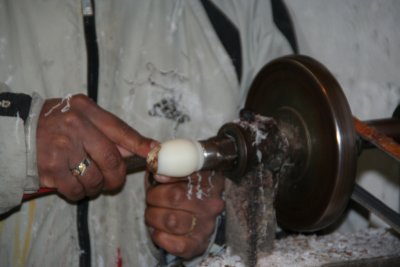
Close-up of tagua seed carving in process. |
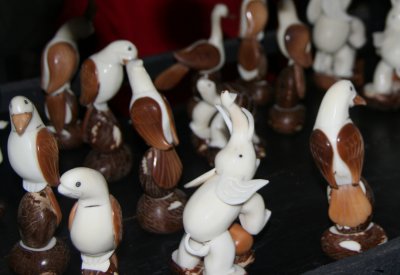
Finished tagua souvenirs that were being sold at the Taller de Tagua gift shop. |
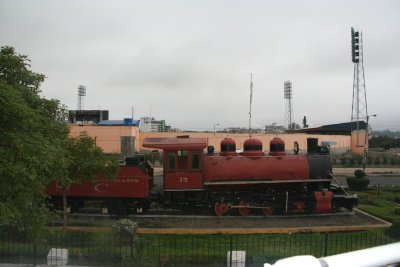
View of an old-fashioned locomotive that we passed by on the Chiva Express in the town of Riobamba. |
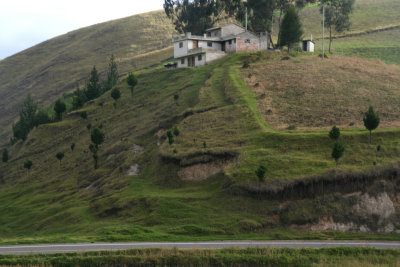
Following are photos that I took from the top of the Chiva Express train. |
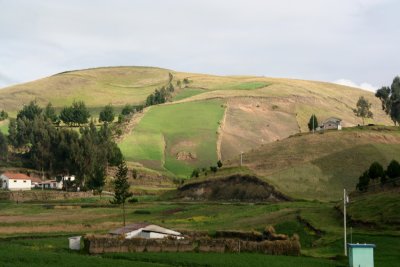
The landscape is very verdant because it rains a lot there. |
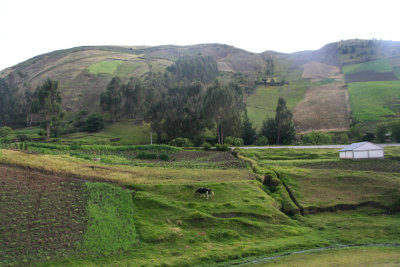
We passed through hilly farmland with cows grazing. |
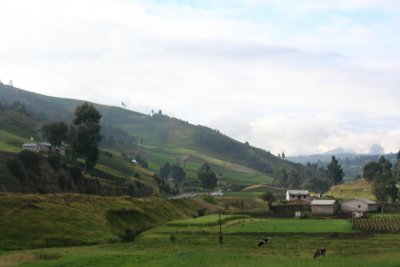
More Ecuadorian farmland in the Andes. |
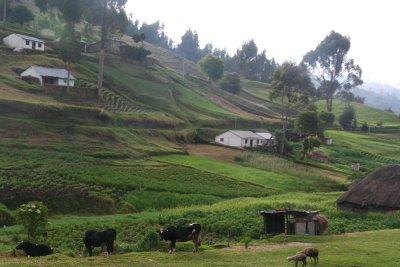
Cows and sheep grazing with farmhouses in the background. |
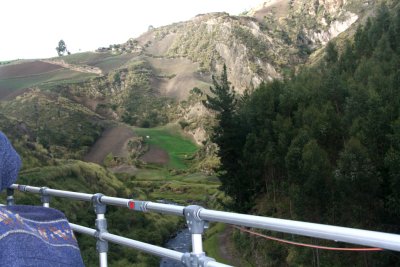
View from the top of the Chiva Express. It was becoming more mountainous. |
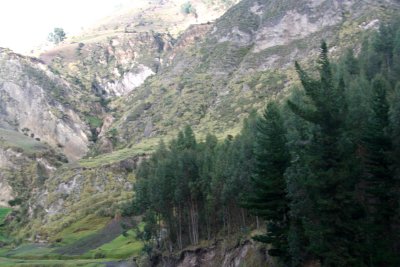
Pine trees along a rocky mountainscape. |

The next stop of the Chiva Express was the Indian market in the town of Guamote. |
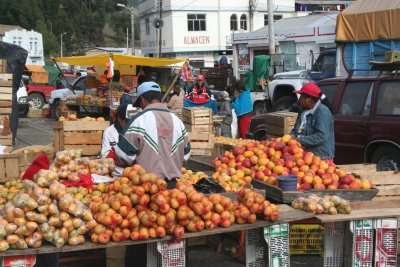
Thursday is market day at this traditional country market in this small town, one hour south of Riobamba. |

A produce truck was being unloaded at the Indian market. |
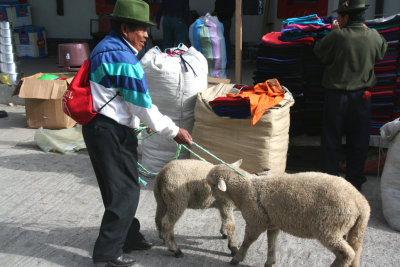
A man bringing his sheep to the market. Indigenous people bring their products from their farms in the surrounding area. |
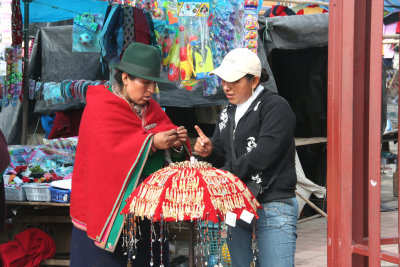
A woman buying jewelry from a vendor at the market. |
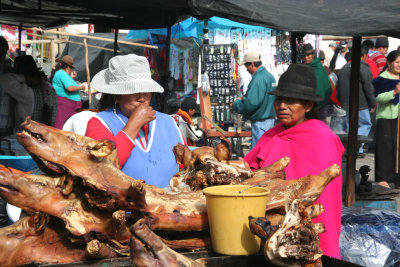
Indian vendors with pig carcasses for sale at the Guamote Market. |
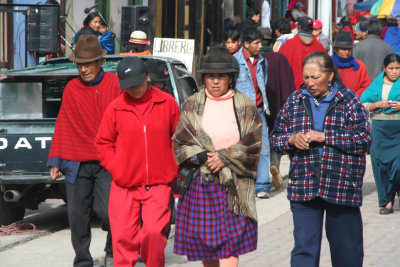
Some of the local people walking through the market. |

This Indian man was coaxing his pig through the market. |
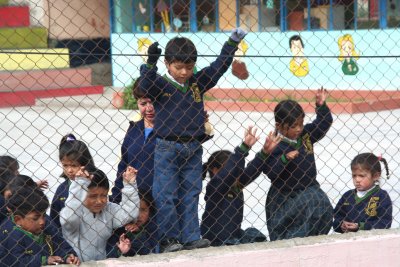
School children in Guamote lined up along this fence before the Chiva Express pulled away. |

A panoramic photo of all the children along the fence. They were really cute! |
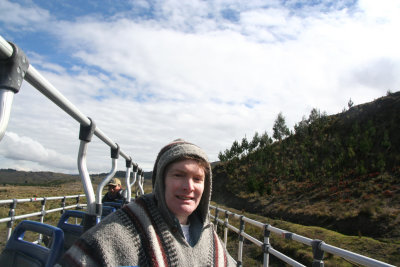
Me in a poncho on top of the Chiva Express. It was really cold on top! |
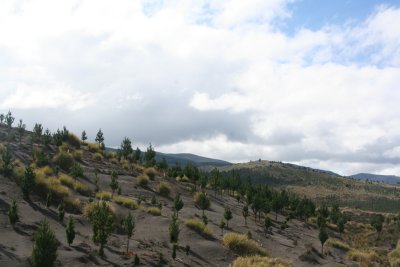
More landscape pictures that I took from the top of Chiva Express. |
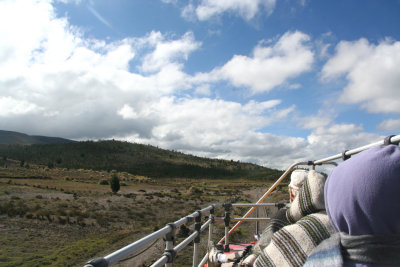
Some of the countryside was rather barren. |
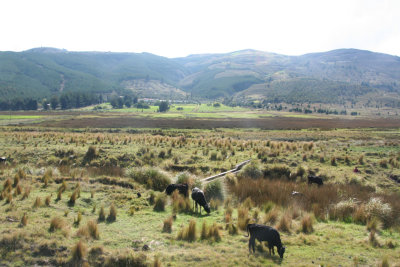
Cattle grazing with mountains in the background. |
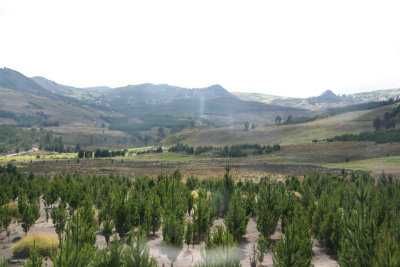
Pine trees along the train's path. |
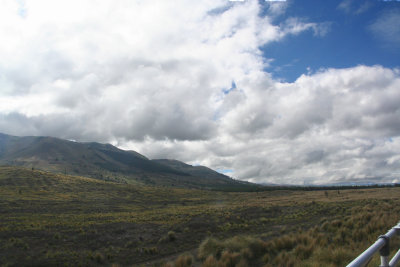
Wispy clouds were offset by a blue sky that day. |
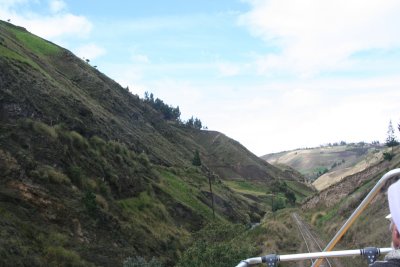
The train passed through this mountain ravine. |
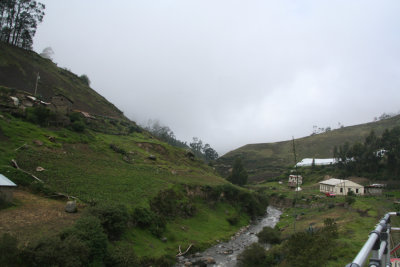
Along some of the ravines were river gorges. |
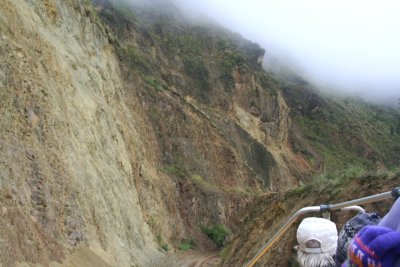
From this view from the top of the Chiva Express, the ravines were becoming more precipitous. |
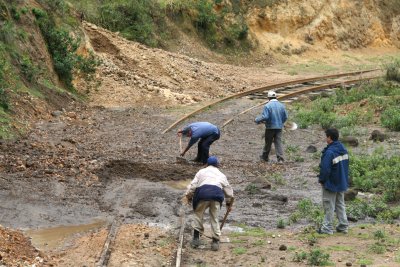
The train made an unscheduled stop, because of a mudslide that made the tracks impassable. |
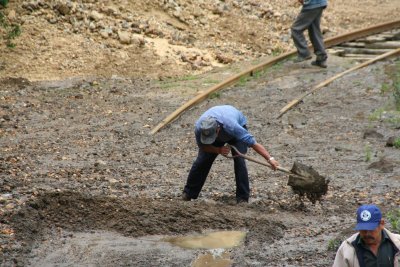
Fortunately, these workers freed the tracks for us. We all passed a hat for them! |

Our next train stop was at the town of Alausí where this stagecoach was parked in front of the train station. |

This Christ statue stands on a hill over the town. I took this photo with a telephoto lens. |
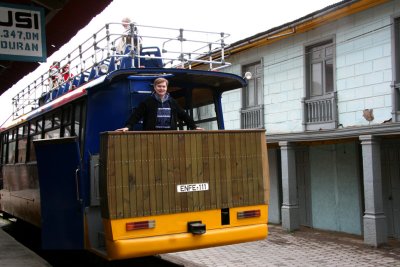
Me standing on the back of the Chiva Express at the Alausí train station. |
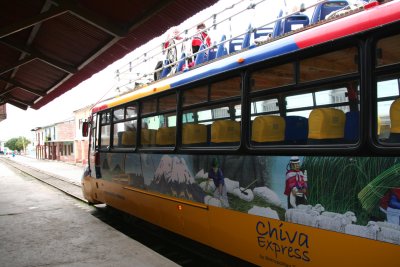
A side view of the Chiva Express. |
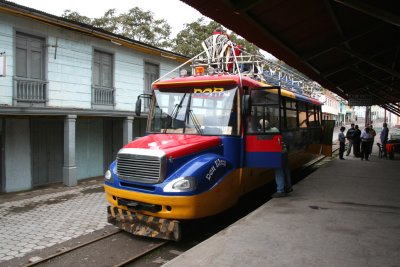
Front view of the Chiva Express at the Alausí train station. |

The train now proceeded from Alausí to Devil's Nose, the most treacherous leg of the Chiva Express train trip. |
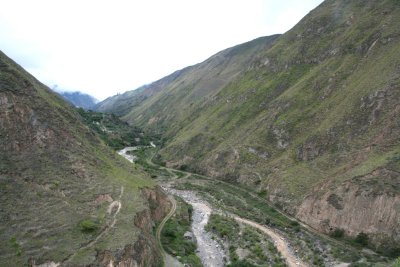
View of a mountain ravine as we approached Devil's Nose. |
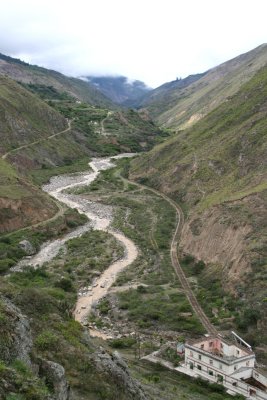
Some of the Chiva Express switchback tracks can be seen in the ravine below. |
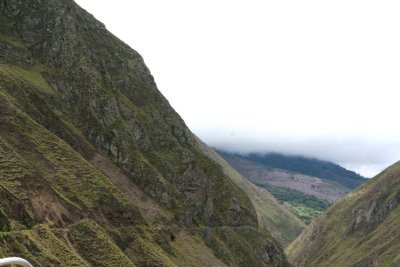
View of Devil's Nose. Construction of the switchbacks there was one of the world's most impressive feats of rail engineering. |
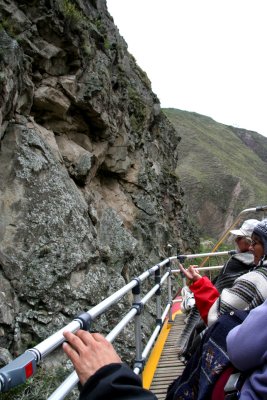
View while we passed along the precipitous rock wall of Devil's Nose. |
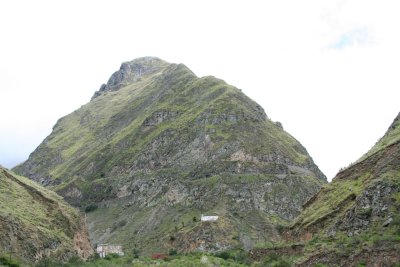
Another view of Devil's Nose. In the 19th century, 3,000 workers died constructing the switchbacks and train line there. |
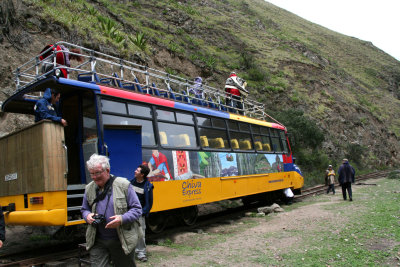
The train made a photo stop in the valley below Devil's Nose. |

The Chiva Express with Devil's Nose in the background. |

View of the train driver as the Chiva Express returned from Devil's Nose back to Alausí. |
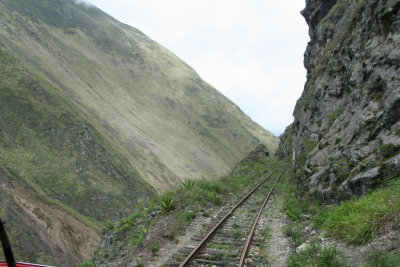
The tracks in front of us on our return trip to Alausí. |











